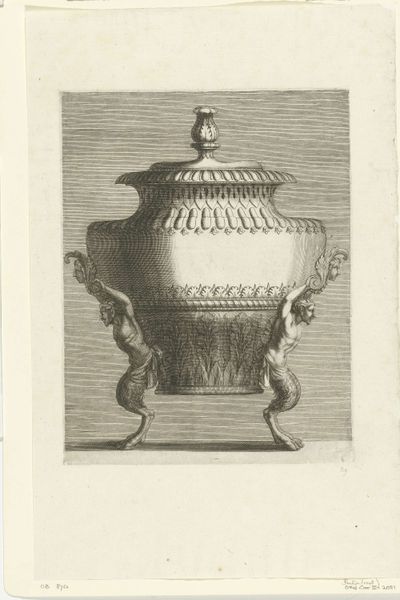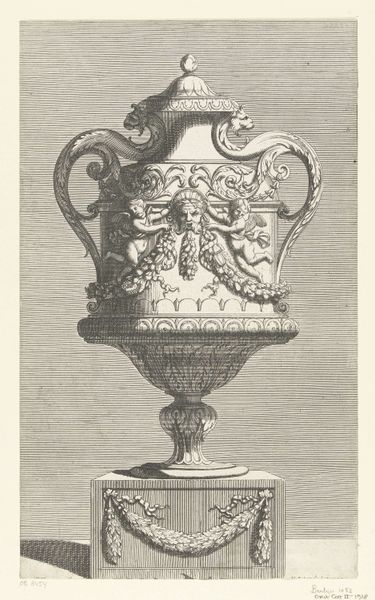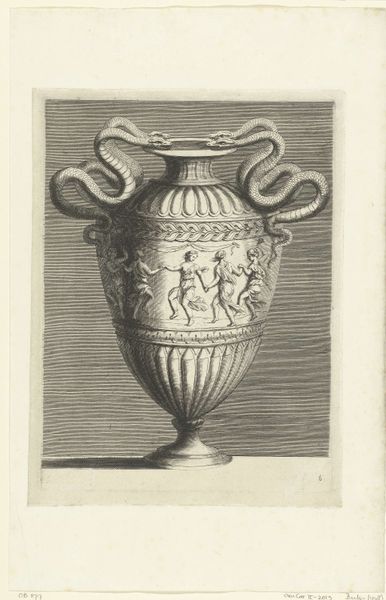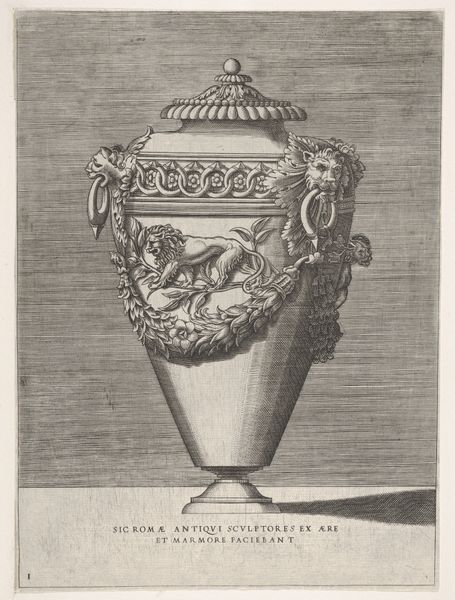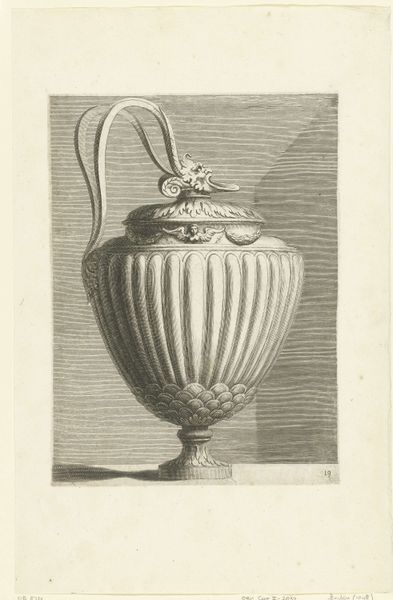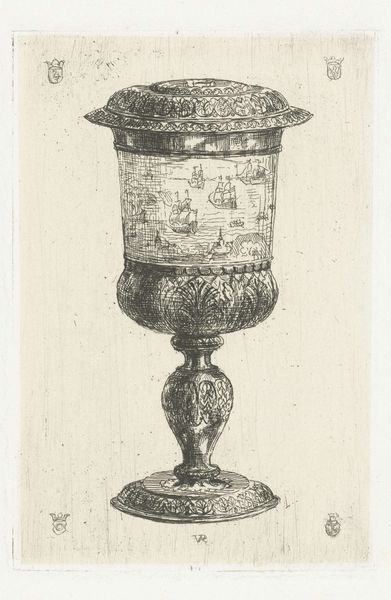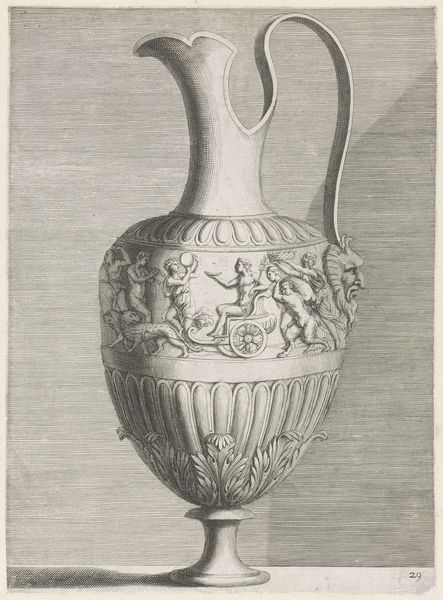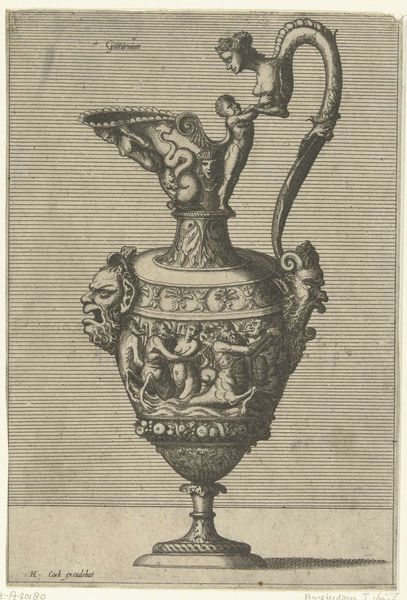
engraving
#
baroque
#
form
#
engraving
Dimensions: height 329 mm, width 222 mm
Copyright: Rijks Museum: Open Domain
This print of an urn, ornamented with satyr heads and sinuous handles, was made by Georges Tournier. Though undated, the graphic technique – etching – provides a clue. Unlike engraving, which requires the laborious cutting of lines into a metal plate, etching allows the artist to draw freely using a needle on a coated surface. The plate is then bathed in acid, which bites into the exposed metal, creating recessed lines that will hold ink. Here, we see the characteristic “fuzzy” line of the etching process. The image itself also tells us something. The urn form, with its classical details like the satyr heads, was a popular motif in the 18th century. Prints like this one circulated as a kind of mood board, informing the design of actual objects. This image is far from the heavy labor of extracting raw materials and crafting a three-dimensional object. Yet it is a crucial step in a broader division of labor, in which design is separated from production, intellectual property from physical skill. By focusing on its making, we can understand this print as more than just a picture, but as a document of a changing world.
Comments
No comments
Be the first to comment and join the conversation on the ultimate creative platform.

